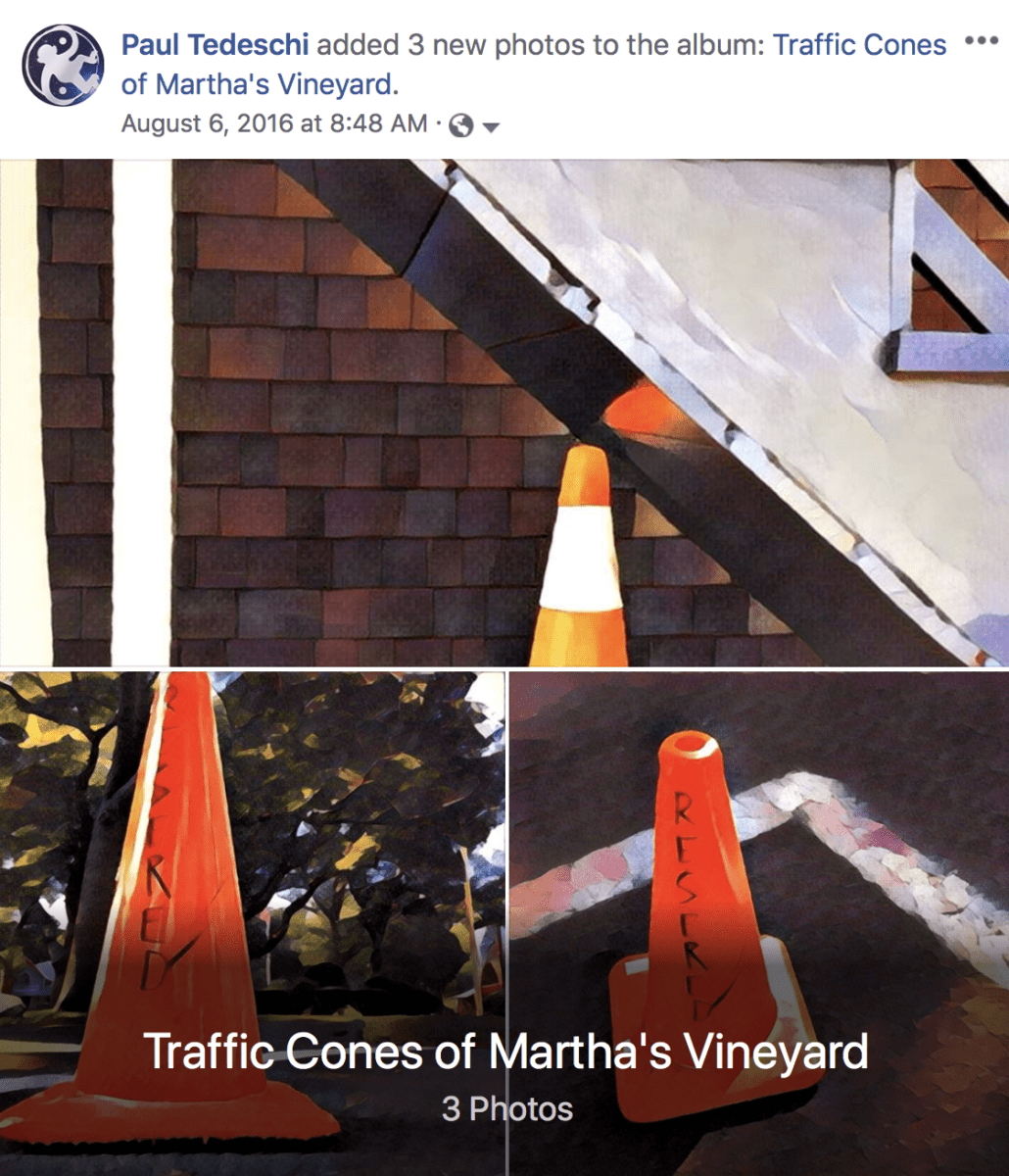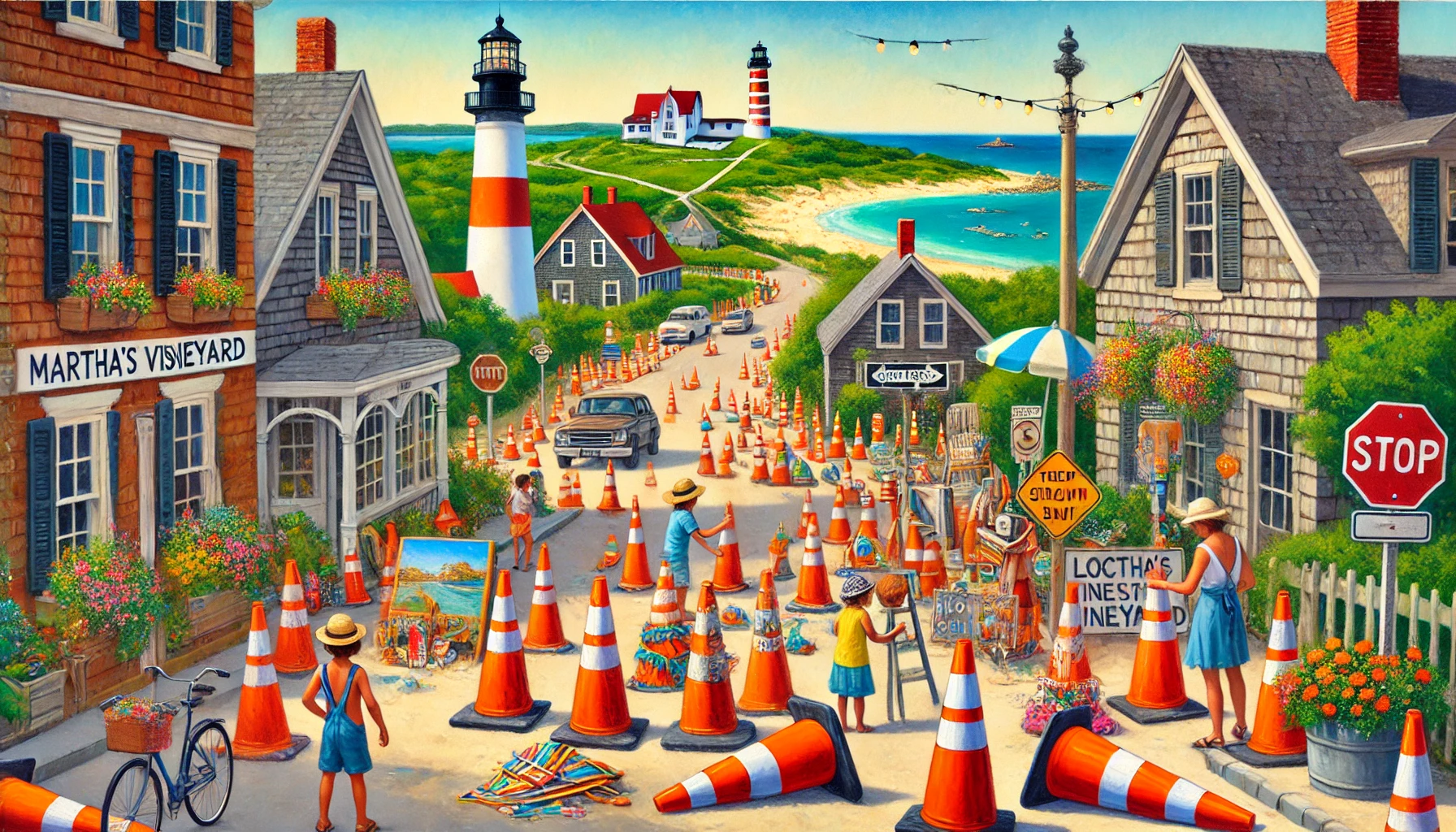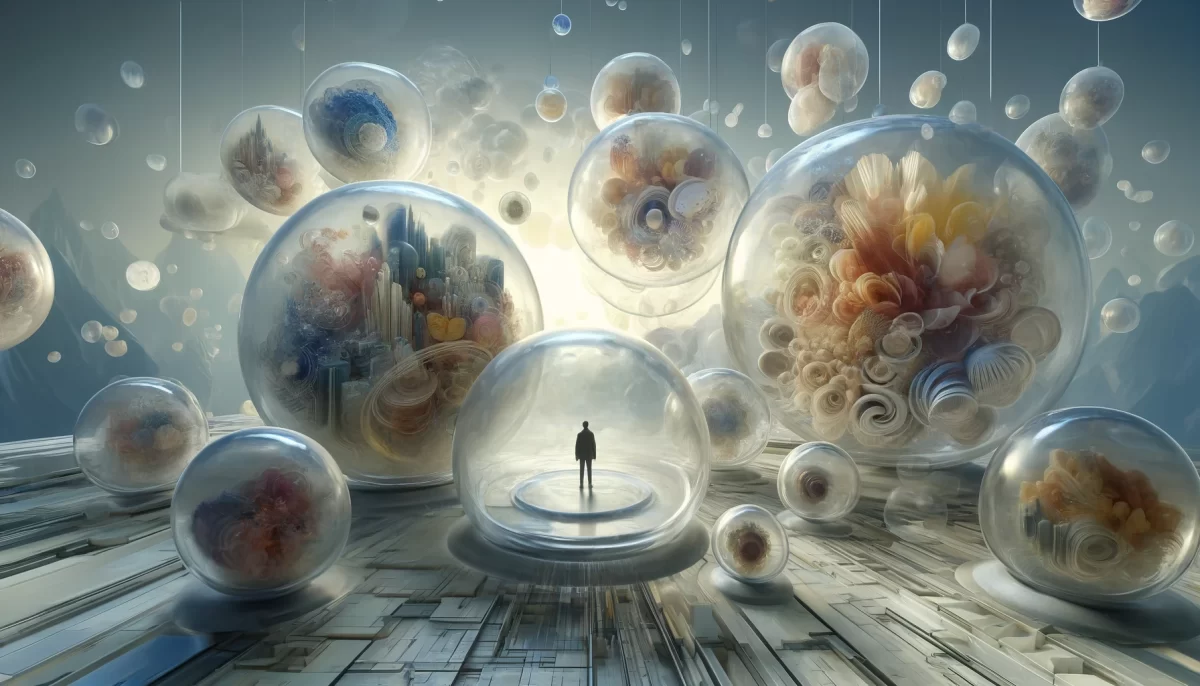
The Whimsy of Orange: A Martha’s Vineyard Tale
In the picturesque tourist mecca of Martha’s Vineyard, where lighthouses stood as sentinels over pristine beaches and quaint streets wound their way through charming towns, an unexpected visitor arrived. It wasn’t a celebrity or a dignitary, nor was it a rare bird or a wayward whale. No, these visitors were of a more mundane, yet curiously striking nature—ugly orange traffic cones.
One sunny morning, as the island’s inhabitants and tourists began their day, they were greeted by the sight of these bright orange cones scattered across the landscape. They appeared overnight, as if placed by some mischievous spirit. They stood in rows along the cobblestone streets, lined up on the sandy beaches, and even made their way to the foot of the iconic lighthouses. At first, they seemed to be an eyesore, a stark contrast to the island’s natural beauty and historical charm.
The initial reaction was one of dismay. Residents and visitors alike bemoaned the intrusion of these garish objects into their idyllic surroundings. “Why here?” they wondered aloud. “Why now?” But as the days passed, something remarkable began to happen. The cones, in their shocking simplicity, began to weave themselves into the very fabric of the island.
Children were the first to embrace the change. They saw the cones not as an obstruction, but as an opportunity. They built elaborate sandcastles around them, incorporating the cones into their designs as towers and turrets. They played games of hopscotch and obstacle courses, laughing and chasing each other around the bright markers. The cones became beacons of creativity and play.
Artists, too, found inspiration in the cones. They painted them in vibrant colors, transforming the once garish orange into a palette of hues that mirrored the island’s famous sunsets. Some artists stacked them into whimsical sculptures, while others used them as subjects for their paintings and photographs. The cones, once an affront to beauty, became a focal point for artistic expression.
Local businesses adapted as well. Restaurants placed cones outside their entrances, decorating them with flowers and lights, turning them into unique, eye-catching signposts. Shops sold miniature cone souvenirs, and bakeries crafted cone-shaped cookies and cakes. The cones, instead of detracting from the island’s charm, added a new layer of delight and curiosity.
Even the island’s flora seemed to embrace the cones. Vines and flowers began to creep up their sides, softening their harsh lines and integrating them into the natural landscape. The cones stood like sentinels of a new, unexpected beauty—one that celebrated imperfection and change.
In time, the cones came to symbolize something profound. They represented the island’s resilience and adaptability, its ability to transform the undesirable into something wonderful. The cones taught a lesson about the nature of beauty and desirability, showing that sometimes, what initially seems like a blemish can become a part of the whole, enhancing rather than detracting.
Desirability, it seemed, did not destroy itself; it evolved. The islanders and visitors learned to see beauty not just in the pristine and picturesque, but in the unexpected and the ordinary. The cones, with their bright orange hue, became a beloved part of Martha’s Vineyard, a testament to the island’s spirit and creativity.
And so, in the end, it was all beautiful. The ugly orange traffic cones, once a symbol of disruption, became a cherished part of the island’s story. They were a reminder that beauty is not fixed or finite, but ever-changing and all-encompassing, found in the most unexpected places.
And so, the cones stood, not as a blight, but as a celebration of transformation and the boundless potential for beauty in all things.


























Leave a Reply